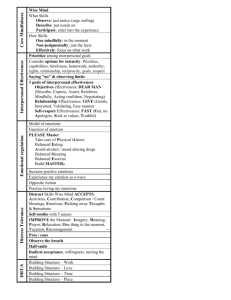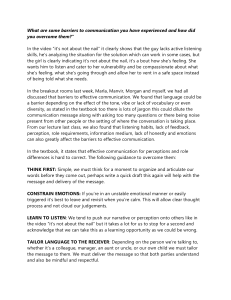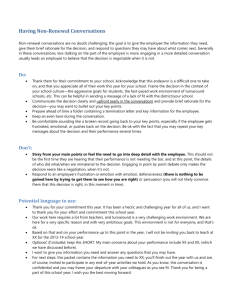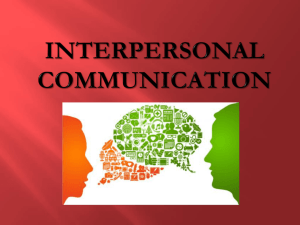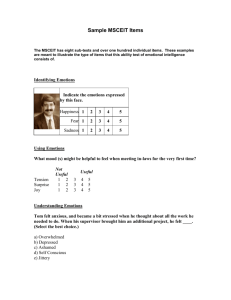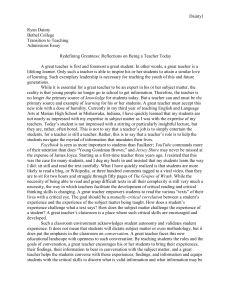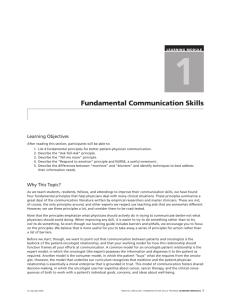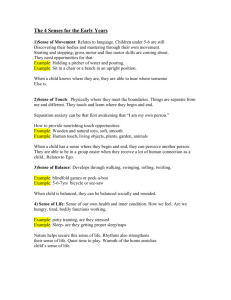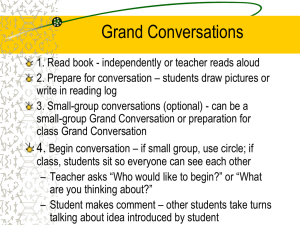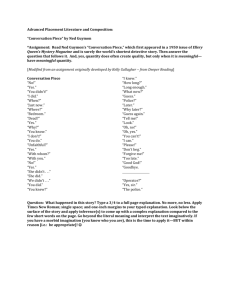Giving feedback - Northeastern University
advertisement
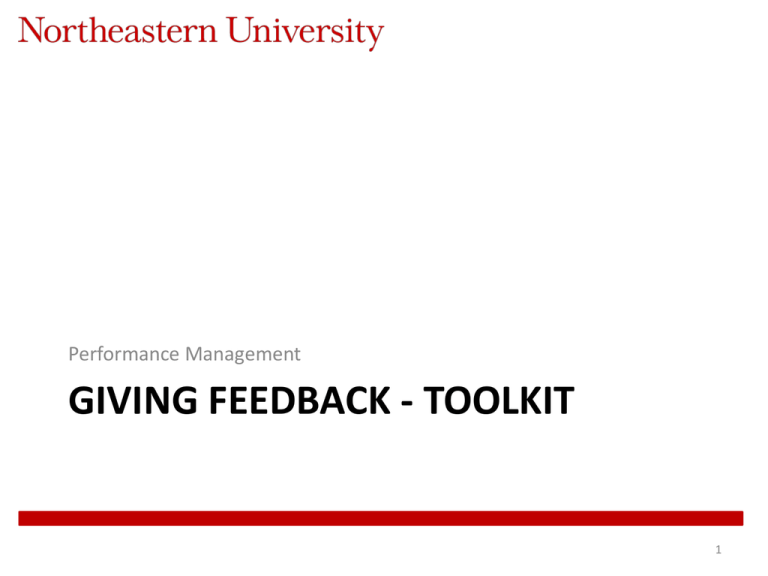
Performance Management GIVING FEEDBACK - TOOLKIT 1 Feedback Framework© • Feedback is essential to a learning and performance culture • Clear, specific, real-time works best • Provide both positive and constructive • Framework assists in preparing to deliver feedback effectively Expectations Outcomes Observations Assessments 2 Checklist for effective feedback delivery 1. Anticipate potential emotions and difficulties 2. Initiate a two-way conversation to deliver and receive feedback 3. Evaluate outcomes and identify solutions moving forward Am I ready to provide feedback, and have I acknowledged the emotions involved? Am I in “act” versus “react” mode? Is this the right time to provide feedback? Can I provide balanced feedback that is specific and behavioral? How can I describe the impact a specific behavior had on me and others? How can I keep the conversation focused on one to two areas for further improvement? Have I allowed the person an opportunity to present their side of the situation? Do I understand what is being said and the other side of the story? Do I need more information before identifying a solution? Have I identified the payoff and positive outcome of the desired change in performance and behaviors? Should I take action or not on this feedback? What would happen if I and/or my team member acted upon this feedback? Opportunities to Deliver Feedback Objective Planning Mid Year Review End of Year Review One-on-One Meetings Staff Meetings One Minute Manager Start of a Project Ad Hoc Discussions After Project Review Importance & Timing Here are four key aspects of effective feedback. Phil Race on University of Southampton website: http://blog.soton.ac.uk/gmoof/files/2013/05/Good-feedback-Stick-Men2.jpg 5 Tips for Giving Feedback • Think of feedback as an opportunity for mutual understanding • Provide nonjudgmental information rather than “positive” or “negative” feedback. Judgments about an associate are likely to elicit defensiveness • Provide a balanced message to create an opportunity for discussion • Discuss feedback regularly so that it becomes a process, not an event • Engage in a dialogue and avoid the tendency to lecture • Allow periods of silence so people can absorb what you say and respond • Let go of the need to convince the other person you are right • Don’t dilute your message with unnecessary qualifiers like “maybe” “perhaps” and “a little” • Avoid overwhelming people with too much feedback at one time. Focus on relevant and significant observations instead of covering every detail
